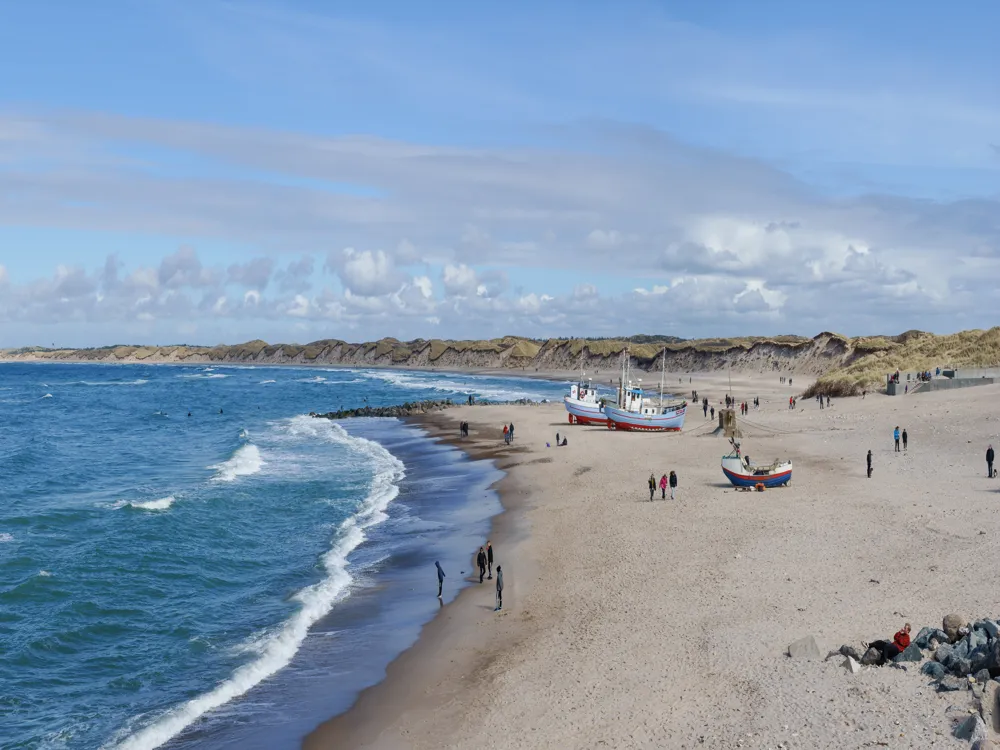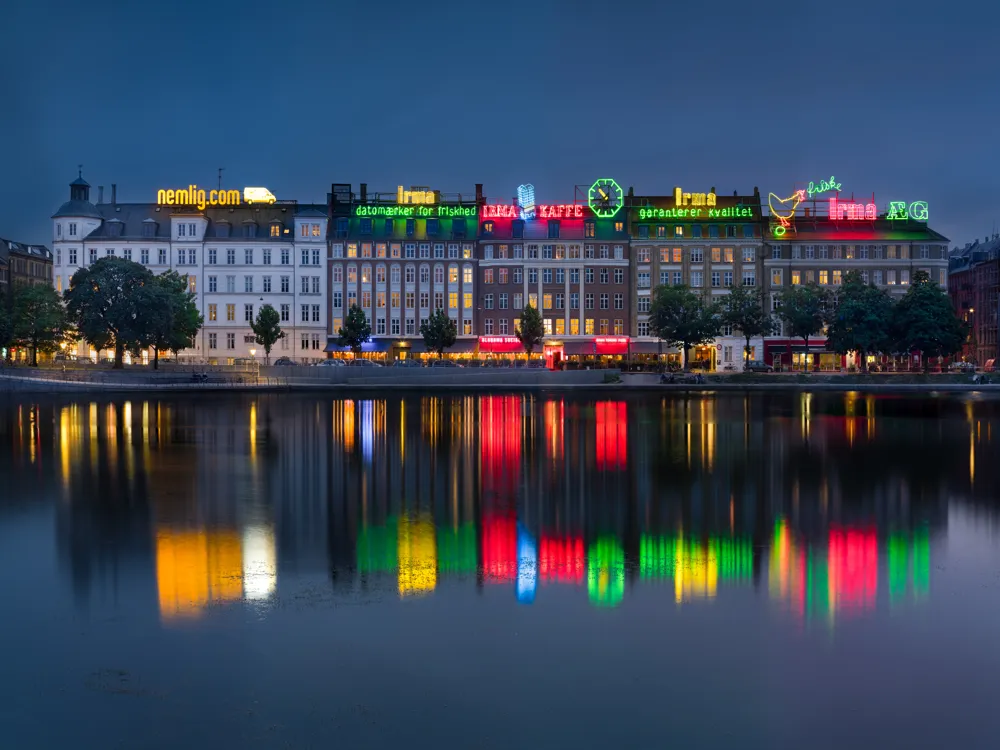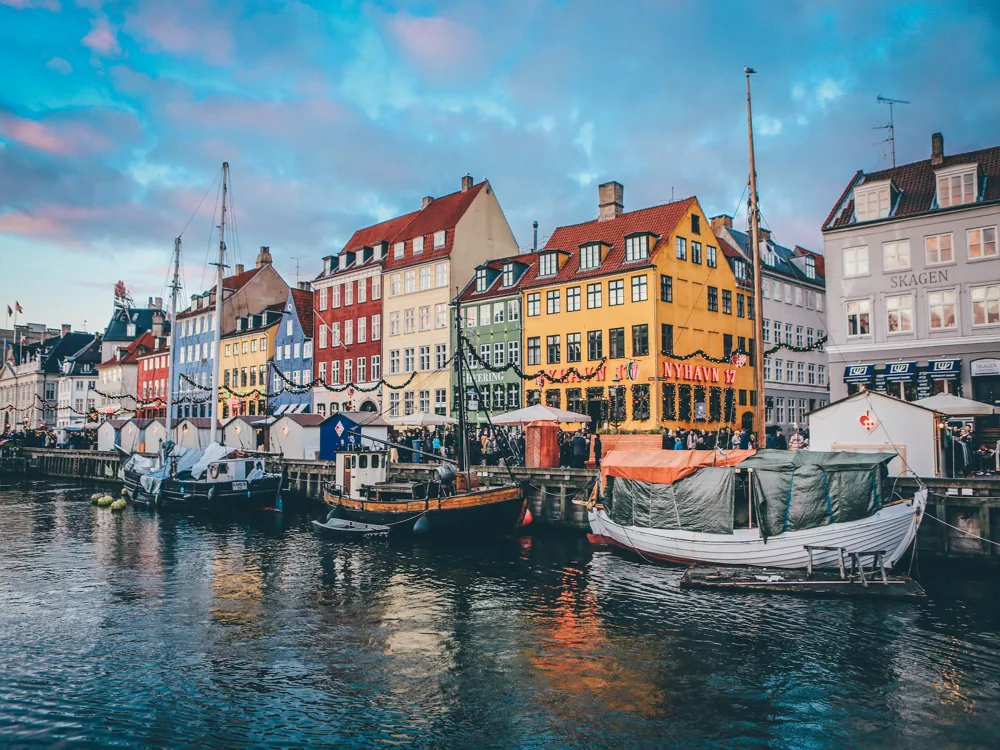What is the best time to visit Denmark?
Denmark, with its picturesque landscapes and vibrant culture, beckons travellers year-round. Understanding the nuances of its climate can significantly enhance your experience. The best time to visit Denmark depends on various factors, offering unique experiences in each season.While daylight hours are lengthy and temperatures are comfortable between 59°F and 68°F, June, July, and August are the finest months to visit Denmark because they are perfect for trekking across the lush countryside. The shore may get crowded during this time of year, when both locals and tourists enjoy spending time outside.The months of December through February are windy, snowy, and chilly, with average highs just above freezing (but still milder than in other Nordic nations). March brings warmer temperatures, but the weather stays cool until May, so there won't be as many other tourists.In general, Denmark is a year-round travel destination; the time of year you choose to travel depends on your travel plans. Because of its more southerly latitudes and the moderating effect of the sea, it has a more temperate temperature than the rest of Scandinavia. The country as a whole experiences a reasonably moderate climate.
Between September and November, the temperature gradually drops from 64°F to 46°F as the season progresses. With fewer people around, the longer evenings are ideal for cuddling up by a crackling fire with a cosy blanket.
Importance of Timing in Travel
Selecting the right time to visit a destination is crucial for an enriching travel experience. Denmark, a country known for its fairy-tale castles, bicycle-friendly cities, and rich maritime history, showcases diverse charms throughout the year.
Overview of Denmark's Climate
Denmark experiences a temperate oceanic climate, characterised by mild temperatures and moderate rainfall. The country is divided into four distinct seasons: winter, spring, summer, and autumn. Each season unfolds with its own set of attractions and activities.
Factors Influencing the Best Time to Visit
Several factors influence the ideal time to visit Denmark. For those who relish the warmth of summer, the months from March to June offer pleasant weather and longer days. Meanwhile, winter enthusiasts can embrace the magical ambiance of Denmark in the colder months from November to February.
More about the Best Time to Travel to DENMARK
Travel Peak Season in DENMARK
The peak season in Denmark spans from June to August, when the weather is at its finest. During this time, the days are long, and the temperatures range from 15 to 25 degrees Celsius, making it ideal for outdoor activities, festivals, and exploring Denmark's beautiful coastline.
-
Summer (June to August):
- Reasons: The summer months, from June to August, are the peak tourist season in Denmark. During this time, the weather is generally mild and pleasant, and daylight hours are long. Popular destinations such as Copenhagen, Aarhus, and coastal areas attract both domestic and international tourists. The summer season offers outdoor events, festivals, and the opportunity to explore Denmark's scenic landscapes.
-
Christmas Season (late November to December):
- Reasons: While not the traditional peak season, the Christmas season, from late November to December, sees an increase in tourism. Cities like Copenhagen are beautifully decorated with Christmas lights, and Christmas markets offer a festive atmosphere, attracting visitors looking for holiday charm.
-
Shoulder Seasons (May and September):
- Reasons: May and September are considered shoulder seasons, marking the transition between the offseason and the peak summer season. During these months, the weather is still pleasant, and tourist attractions are less crowded compared to the peak summer months.
Travel Offseason in DENMARK
Contrastingly, the offseason, from November to March, offers a quieter atmosphere with fewer tourists. While the weather is cooler, ranging from 0 to 8 degrees Celsius, the charm of Denmark persists. This period is perfect for those seeking a more intimate experience, exploring museums, and enjoying the winter landscapes.
-
Late Fall to Early Spring (November to March):
- Reasons: Late fall to early spring is generally considered the offseason in Denmark. During these months, temperatures can be colder, and there may be fewer tourists. Some outdoor attractions and parks may have reduced hours, and certain events or festivals may be less frequent.
-
Winter (December to February):
- Reasons: Winter is the quietest time for tourism in many parts of Denmark. While larger cities, such as Copenhagen, still have attractions and cultural events, outdoor activities and some tourist sites may be less popular due to colder temperatures.
-
Shoulder Seasons (April and October):
- Reasons: April and October are considered shoulder seasons, marking the transition between the offseason and the peak summer season. During these months, the weather begins to improve, and some attractions and services start to reopen. Travellers seeking a quieter experience may find these months appealing.
Danish Weather in Winter (November – February)
Overview of Winter in Denmark
Winter in Denmark transforms the landscape into a winter wonderland. From November to February, the temperatures hover between 0 and 5 degrees Celsius, offering a chilly but enchanting experience. The cosy atmosphere, festive decorations, and occasional snowfall make it a magical time to visit.
Danish Weather in November
November marks the beginning of winter, bringing cooler temperatures and shorter days. The average temperature ranges from 2 to 7 degrees Celsius. While it might be brisk, the crisp air and festive preparations create a charming atmosphere, especially in Copenhagen.
Danish Weather in December
December heralds the holiday season, with average temperatures ranging from 0 to 5 degrees Celsius. Christmas markets, adorned streets, and the festive spirit make it an enchanting time to explore Denmark. Don't miss the iconic Tivoli Gardens in Copenhagen, transformed into a winter wonderland.
Danish Weather in January
January brings the coldest temperatures, ranging from -2 to 4 degrees Celsius. Embrace the winter chill by engaging in ice skating, visiting historical sites, or enjoying a cosy meal in one of Denmark's charming cafes.
Danish Weather in February
As winter wanes in February, temperatures begin to rise slightly, ranging from 0 to 5 degrees Celsius. This transitional period offers a unique experience, with the possibility of witnessing the first signs of spring while still enjoying the charm of winter.
Danish Weather in Summers (March to June)
Overview of Summer in Denmark
Summer in Denmark, from March to June, is a delightful season characterised by longer days and milder temperatures. The average temperature ranges from 15 to 25 degrees Celsius, creating the perfect conditions for outdoor adventures and cultural explorations.
Danish Weather in March
March marks the arrival of spring, with temperatures gradually warming up. The average temperature ranges from 2 to 8 degrees Celsius, signalling the beginning of outdoor activities. Witness the blooming cherry blossoms and explore Denmark's scenic countryside.
Danish Weather in April
April brings milder temperatures, ranging from 4 to 12 degrees Celsius. Spring is in full swing, and Denmark bursts into colour with blossoming flowers. It's an ideal time for outdoor excursions, including hiking, biking, and exploring Denmark's charming villages.
Danish Weather in May
May heralds the onset of warmer temperatures, ranging from 8 to 17 degrees Celsius. With longer days, May is perfect for exploring Denmark's coastal areas, visiting historical landmarks, and enjoying outdoor festivals.
Danish Weather in June
June marks the official beginning of summer, with average temperatures ranging from 12 to 21 degrees Celsius. The longer days allow for extended exploration of Denmark's attractions, including its beautiful beaches, castles, and vibrant cities.
DENMARK Weather in Monsoon (July – October)
Overview of Monsoon in Denmark
While Denmark does not experience a traditional monsoon season, the months from July to October bring a mix of mild temperatures and occasional rainfall. This period offers a different charm, with fewer tourists and a refreshing atmosphere.
Danish Weather in July
July brings pleasant summer weather, with temperatures ranging from 15 to 23 degrees Celsius. While occasional rainfall is possible, it doesn't deter outdoor activities. Experience Denmark's lively atmosphere, explore its coastline, and attend cultural events.
Danish Weather in August
August continues the summer vibes, with temperatures ranging from 14 to 21 degrees Celsius. The occasional rain showers contribute to the lush greenery, creating a picturesque backdrop for outdoor adventures and cultural explorations.
Danish Weather in September
September marks the transition to autumn, with temperatures ranging from 11 to 17 degrees Celsius. The weather remains pleasant, making it an ideal time for nature walks, exploring Denmark's parks, and enjoying outdoor cafes.
Danish Weather in October
October brings cooler temperatures, ranging from 7 to 12 degrees Celsius. While autumn foliage paints the landscape, occasional rainfall adds to the cosy atmosphere. Explore Denmark's historical sites and museums, embracing the beauty of the changing seasons.
Conclusion
In conclusion, the best time to visit Denmark depends on individual preferences and the kind of experience one seeks. Whether revelling in the festive charm of winter, enjoying the vibrant summers, or exploring the tranquilly of the offseason, Denmark offers a diverse range of experiences throughout the year.
Is Denmark worth visiting in winter?
Absolutely! Winter in Denmark offers a magical atmosphere with festive decorations, cozy vibes, and occasional snowfall. It's an ideal time for a unique and charming experience.
What is the best month to explore Denmark's coastline?
June is the perfect month to explore Denmark's coastline, with warmer temperatures and longer days. The beaches come to life, offering a splendid backdrop for outdoor activities.
Does Denmark have a monsoon season?
Denmark doesn't have a traditional monsoon season. However, the months from July to October bring occasional rainfall, creating a refreshing atmosphere.
Are outdoor activities feasible in Denmark during winter?
Yes, Denmark offers a range of winter activities, including ice skating, winter walks, and festive events. Embrace the winter chill while exploring the country's unique charm.
What cultural events are prominent in July in Denmark?
July in Denmark is filled with cultural events. From music festivals to outdoor performances, this month showcases the lively and vibrant cultural scene in the country.



jpg.webp)












